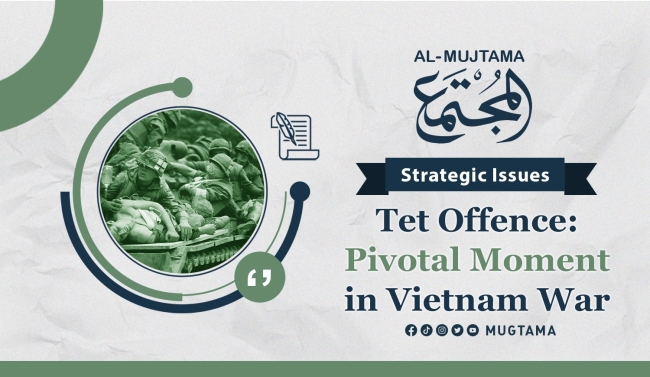Tet Offence: Pivotal Moment in Vietnam War Featured
The Vietnam War is widely regarded as one of the most complex and bewildering conflicts in modern history. Fought between the forces of North Vietnam and the US-supported government of South Vietnam, the war brought unimaginable suffering and loss to the Vietnamese people.
In the Vietnam War, there were two main sides:
- North Vietnam and its communist allies, including the Viet Cong (VC), a communist government in South Vietnam.
- South Vietnam and its allies, including the United States, South Korea, Australia, and Thailand.
Causes of Conflict
The causes of the conflict were deeply rooted in the Cold War era, with the United States fearing the spread of communism and actively intervening in an attempt to prevent it. The Tet Offensive, which took place in early 1968, was a pivotal moment that forever altered the course of the war.
Vietnam War had multiple causes:
- North Vietnam wanted to unify the country under communist rule.
- The South Vietnamese government, supported by the US opposed communism.
- The Cold War rivalry between the United States and the Soviet Union made Vietnam a strategic battleground.
What happened in the Tet Offensive
The Tet Offensive was a coordinated series of attacks launched by the North Vietnamese Army (NVA) and the Viet Cong (VC) against South Vietnamese and American forces on January 30, 1968, during the Vietnamese New Year holiday (Tet). The offensive was a surprise attack on major cities and towns throughout South Vietnam, including Saigon.
The Tet Offensive was the largest military operation of the Vietnam War, and it caught the US and South Vietnamese forces by surprise. The NVA and VC forces were initially able to capture or control several major cities, including Hue. However, the US and South Vietnamese forces eventually pushed the NVA and VC forces back, and the Tet Offensive ended in a military defeat for the North Vietnamese and Viet Cong.
Results of Tet Offensive
While the Tet Offensive did not result in a military victory for the North Vietnam forces, it had significant political consequences. It undermined support for the war effort within the United States, leading to increased opposition and protests. The American public began questioning the legitimacy of the government's claims of progress and victory in Vietnam.
Thus, the Tet Offensive had several results:
- It caused a significant increase in American casualties.
- It decreased public support for the war in the United States.
- It led to the resignation of US Defense Secretary Robert McNamara.
- It strengthened the determination of the North Vietnamese to keep fighting.
Why it is a turning point
The Tet Offensive was a turning point in the Vietnam War because it shattered the illusion of American invincibility and forced a reevaluation of the war's feasibility and purpose. It exposed the massive gap between the military reality on the ground and the optimistic rhetoric coming from Washington. The Tet Offensive signaled a critical shift in public opinion and pushed the US government towards seeking a negotiated settlement to end the war.
The Tet Offensive is considered a turning point in the Vietnam War for a few reasons:
- It showed that the North Vietnamese were still powerful, and the South Vietnamese government was weak.
- It decreased support for the war in the United States, leading to calls for withdrawal.
- It strengthened the determination of the North Vietnamese to continue fighting.
The Tet Offensive wasn't a military victory for the North Vietnamese, but it was a strategic victory. It made it clear that the United States couldn't win the war and needed to find a way to withdraw. As a result, the US changed its strategy from trying to win militarily to negotiating a peace agreement.
In conclusion, the Tet Offensive stands as a pivotal moment in the Vietnam War. It revealed the harsh realities of the conflict, shook the confidence of the American public, and ultimately played a key role in changing the course of the war itself.


